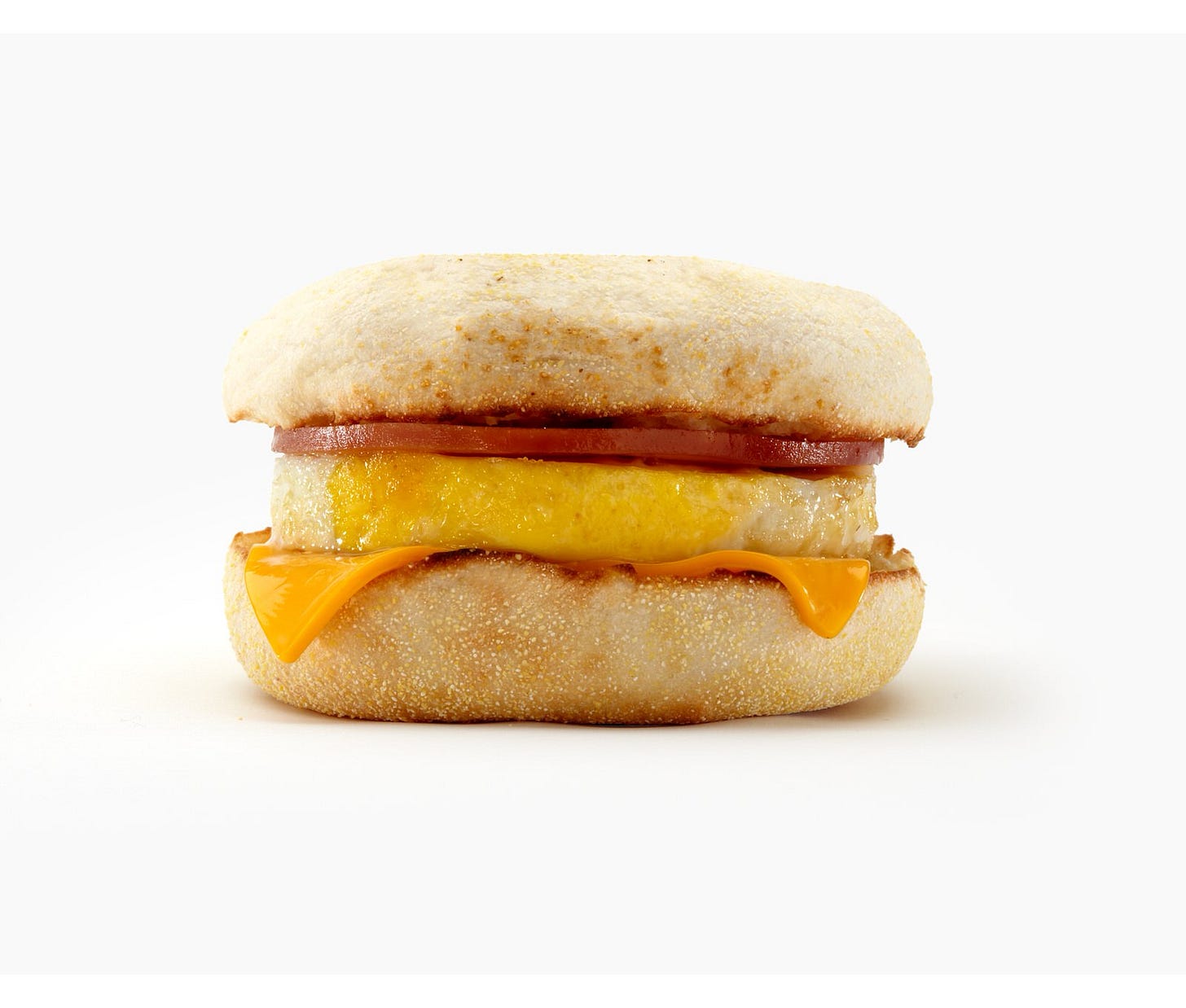We have all known people who are chronically early, born with some sort of time signature distortion. These people receive zeitgeist signals much earlier than everyone else. They are certain artists and writers, music people, roommates, otakus, traders. Those who are truly early are cursed: "may you live in interesting times," the saying goes, and these people are chronically interested in things. Yet they are too early to make hay, make money, make sense of it – i.e., they’re functionally wrong. By the time other people catch on, they're annoyed.
There is something indie, hipster, generationally specific about this: a fundamental relationship to the curatorial flaneur, interested in this and that, then disinterested just as the unwashed masses sweep in and make that thing profitable.
You can be old and early
You can be young and late
You can be right on time and not give a shit at all
At Nemesis HQ we have discussed how five to ten minutes early is perfect. So you're first when establishing the position is cheap, but it's legible, and potentially profitable.
Money, interest, the internet, information, signal, noise, neurotransmitters, sense of the new, sense of the old, sense of the now, the collective unconscious – all intersect here, constituting a new picture of a brand, what it means to be a brand now, what it means to be a brand and have an audience. What incentives are you giving the people who witness you, whose perceptions, participation and purchases comprise your identity?
In one case, there is "being early as a service," the concept that inspired this memo. In terms of crypto, everyone knows how those who got into Bitcoin and Ethereum early experienced one of the most extreme reratings of any financial asset ever, and saw the prices of their holdings increase by orders of magnitudes. With this history in mind, as well as many other 1000x-ers since then, every new token carries within it the potential for a similar gain. Largely absent of ‘fundamental’ value, their main value proposition is allowing one to be early to a new thing; being-early-as-a-service.
The (much ballyhooed and somewhat Andreesen-forced-meme) creative economy stuff related to this as well. What if cultural brands or products were tokens that rewarded earliness? The concept was that you could buy tokens associated with cultural products you were interested in (memes, brands, creators, influencers, etc.) and disproportionately profit once they became popular later on.
This is where the indie psychology got roped in, as previous regret could be mined and turned to money. The idea that you were into something before anyone else could finally become financially profitable. Unsurprisingly – and largely unprofitably – this idea was first explored by the art / culture / crypto intersection hipsterati much earlier than others (2015 - ).
Many people have derided crypto and web3 as mere "get rich quick" schemes. But getting rich quick is too simple. More significantly, participation in crypto and its cycles has to do with an experience of time, of being on time or the right amount early, of being online at just the right moment, and that mattering for once – you catch the notification, enter the chat at precisely the right time. Finally, you're able to decipher the code, cut through the spam at the correct rate. More than just getting rich quick, it is confirmation of your social tempo being correct. Famously, it's about being dumb enough and smart enough at the same time (thus endless big/small brain memes and phrases).
And compare this to compound interest over a lifetime, or the tweets that say “every time the weather is over 50 degrees in December I don't contribute to my 401k,” or the idea that if you put X amount in the market now you'll have Y by the time you're old, or simply how generational wealth flows from other epochs all together. Put another way, the anxiety that it's already too late hovers around almost all conventional financial practice.
Even if you're not actually rewarded for being early, when you transact with an early-as-a-service-brand, you're in contact with the early, rather than in contact with the late. Thus early is the service, the value prop. The early sweeps the lateness away. It is a tonic for being too late, for being priced out, for generational position, even if only in theory.
However, needing to be early can get old. It can feel annoying or stressful. Waking up early is tiring, as is staying up late. Early can drain you. One can press the early button too many times.
It's possible to be early to losing everything.
Brands that offer earliness as a service often turn you out, make you into a shill or an evangelist for them. This is, of course, the ponzi dynamic. To shill or be shilled – which side are you on? At a certain point it becomes your job to evangelize, to get the show on the road. The brand infects you with an evangelical principle, "inspires" you, that is incentivizes you, to proselytize.
In crypto, as well as in the universe of dropshipped instabrands, being-early-as-a-service is premised on the constant production of new brands, as the cost of creating new brands is essentially approaching zero. Each unique brand is ‘early’ only once in its lifecycle before it’s superseded by a newer one. However, crypto as a whole has a brand that’s magically in a state of a perma-early becoming – a future that’s always around the corner.
Certain fashion brands also offer earliness as a service, e.g. as an aesthetic. Wear this: it's different enough from the status quo (either socially or materially) that people will, or could, assume it's a signal of something coming next. You become someone willing to be, or look, early. To show you understand something that other people do not. "I'm late, I'm jumping on this trend," one girl says into the camera. "You shouldn't wear the trend if you were old enough to remember it the first time around," the other one warns.
Other fashion brands are meant to position you in a much longer time horizon. For example, take the Cartier infinity bangle – screw it on and become part of a (cheesy) legacy. A luxury heritage brand is, at least in theory, not trying to max out on the moment so much as capitalize on the merger of the past and the future.
There are many more brands in the world than merely crypto brands or fashion brands, though they typify the dynamics common to many. Zooming out, now, a very Nemesis attempt to map the terrain of brand-audience dynamics in 2024.
Certain brands give their audiences STATUS: "others see me associated with the brand and are forced to bow down". Others provide UTILITY, which includes financial gain: "this brand serves a purpose to me". Yet others are a closed loop: "this brand provides me with ENTERTAINMENT, and that's that," so what other people think doesn't register too much. But more and more, a (PARA)SOCIAL offering is at play: "this brand brings me together with others, either in theory or in practice. become part of my brand, and you will have friends".
Successful brands will occupy more than one of these categories at once. Upstarts will migrate from providing utility to status or a social bond. Early as a service is arguably all of the above.
What follows, in no particular order, are some other ways contemporary brands relate to their audiences:
A) As a cryptic, Old Testament god, like certain streetwear heavyweights. You never know quite where this brand might show up. Hypebeasts start to follow easter eggs or dream them up where they do not exist. A modicum of playful disdain for the audience is necessary, at least at moments. There is the sense that they are toying with you, possibly determining your destiny. But maybe you can also make money with them by flipping them, so the illegibility is something to be exploited collaboratively and is thus not completely rapacious. Cults are a natural outgrowth of this, which makes these brands particularly American. (What would a New Testament god brand look like?)
B) As a mirror. We are one...I am you. Some influencers do this, going beyond the parasocial to full identity-merging. Pop diva fandoms can also absorb their audiences into themselves. Perhaps the most obvious precursor to this phenomenon are fashion designers like Isabel Marant, where everything is designed for her, by her, and she is the fit model for the clothes, or Phoebe Philo who "is her own customer".
C) Co-creatively, i.e. as "headless brands," in which you help to make them up. These brands seed memes, language, and other stuff for the audience to fill in and propagate.
D) As a talking head. In a Tiktok paradigm all brands need faces, need to be people. "People follow people, not brands," is the new conventional wisdom, replacing 1955's "the customer is not an idiot, she's your wife". Arguably this is the natural conclusion of Citizens United's "brands are people too," plus an obscure trend in the line of Siri, PFPs and AI avatars. The brand collapses into a spokesperson endlessly talking to the screen.
At Nemesis, we’ve worked on projects for Yearn, Urbit, and Nina Protocol in addition to many for our more conventional clients, like Supreme, Louis Vuitton, Art Basel, and MTV. As you might imagine, we’ve stayed pretty tuned into what’s happening in crypto through the bear market. But eventually we realized one major difference: we hardly visit project websites or encounter official brand identities anymore. Brands exist primarily as names and tickers and UGC, plus memes on Twitter.
This seems related to the lack of “fundamentals” in crypto, where value is only ascribed in relative terms (X should be worth this % of Y which is worth that % of Z). It occurred to us that this lack may apply to brands in crypto too, and stand as a harbinger of dynamics to come for brands in other disciplines and fields. At the same time, brand and narrative are far more important than any other aspect (e.g. the hard tech behind something) as drivers of the flow of attention, in an increasingly crowded and jaded playing field.
So brands seem to be more important than ever, but they are constructed out of less original source material than ever before. In the absence of anything genuinely novel in terms of technology or product, brands exist mainly in relation to each other and derive most of their “meaning” from the vertical or associative constellation they are lumped into.
In crypto many use the mental model of the tech hype cycle, but the reality is more like the fashion cycle below, with its shepard’s tone-like dynamics, in which each new thing is supplanted by another new thing, and no linear pattern emerges. Things very rarely reach the plateau of productivity, more often falling straight to Hades through the trough of disillusionment. No one seems to follow up on the hyped project of yesterday.
For a brand to remain permanently early, does it need to be protean, open, or co-created in order to reskin itself to accommodate new narratives? What’s more, is there even a social or cultural incentive anymore to be truly early to phenomena or trends?
If the cost of producing novelty is zero, the value of the novelty of a new thing is also approaching zero. (This relates to a previous Nemesis forecast, in which we predicted the "end of trends" all together.) At the end of the day, the hipster’s personal brand is being early. For a true hipster, turning it into a ‘service’ would negate the ‘being early’ part all together.
Our Fashion Hype Cycle diagram also illustrates the conflict:
THERE’S A PREMIUM TO NEW SHINY THINGS
vs. ‘previous-new’ things, as they still contain pure potential
BUT AS THE COST OF CREATING NEW THINGS APPROACHES ZERO, THE MEAN VALUE OF NEW THINGS DOES TOO
…a new thing can be a brand, aesthetic novelty, tokens, or something else all together. Value starts at nothing, goes up to the point of inflated expectations to account for the theoretically infinite potential it has, then falls down to actual value close to zero.
The next big thing might already be here, and it just might end before it ever really began.
What will you do with the big blank slate that arrives in its wake?












Gud 1
your future self is already in circulation it just hasn't reached you yet